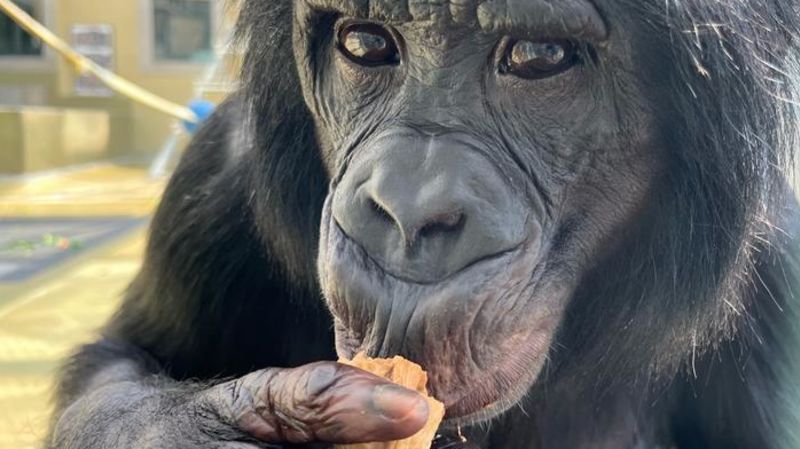Recent research has revealed yet another intriguing aspect of great apes’ cognitive abilities, suggesting that some species, including bonobos, are capable of recognizing when a human partner lacks knowledge and can actively communicate information to assist them. This study, conducted by a team of researchers from Johns Hopkins University, has generated significant interest since it offers valuable insights into the cognitive processes of non-human primates.
Specifically focusing on bonobos, the research team demonstrated that these great apes could effectively indicate the location of hidden food to humans who were unaware of its whereabouts. In their experimentation, the researchers set up a controlled environment where male bonobos interacted with a researcher named Luke Townrow, who served as the human participant. Townrow would sit across a table while another individual concealed a treat beneath one of three cups, challenging the bonobos to understand and demonstrate their ability to recognize moments of uncertainty in their human collaborators.
During the experiments, there were instances where Townrow could see which cup contained the treat, in which case the bonobos exhibited a passive behavior and waited for him to retrieve the food. In contrast, when Townrow was unable to locate the treat, the bonobos would actively point to the correct cup, showcasing their willingness to communicate crucial information to assist their partner. The researchers emphasized that this simple yet enlightening experiment highlights the social cooperation and communicative capabilities linked to teamwork among these intelligent animals.
The findings from this study hold particular significance, as Chris Krupenye, an assistant professor of psychological and brain sciences at Johns Hopkins University and a co-author of the research, remarked that it provides compelling evidence suggesting non-human primates possess a rudimentary understanding of when others lack knowledge. This ability, referred to as ‘theory of mind,’ has long been considered a fundamental cognitive feature unique to humans, facilitating our capacity to engage with others’ perspectives, cooperate, and instruct those who are unaware of particular information.
Krupenye elaborated on the implications of the study, arguing that bonobos, much like humans, seem to possess an essential awareness of the knowledge gaps in others. Previous investigations into primate behavior have predominantly focused on chimpanzees, suggesting growing evidence that the cognitive capabilities of bonobos may align more closely with those of humans than previously believed.
Looking ahead, the research team plans to delve deeper into understanding the motivations driving bonobos to share information and how they perceive the thoughts and beliefs of others. Townrow remarked that while the study demonstrates that apes can influence a partner’s behavior, it raises a critical question about whether their communication is also aimed at altering the mental state or beliefs of their human partners.
Beyond the immediate implications for our understanding of bonobos, Krupenye hopes this research could enhance awareness regarding the conservation status of this endangered species found only in the Democratic Republic of the Congo. He highlighted the rich social lives of bonobos, asserting that such studies are not only academically significant but carry a moral responsibility to promote understanding and support for their preservation.
Alexander Piel, a biological anthropologist from University College London who was not involved in this specific research, backed the findings, noting that even the limited sample size of three bonobos, which were all in captivity interacting with humans, does not undermine the study’s validity. He remarked on how this research continues to shed light on the cognitive faculties of our closest relatives, drawing parallels between human and bonobo thought processes.
Finally, the research, which is an exciting addition to the ongoing exploration of non-human primate cognition, was published in the esteemed journal ‘Proceedings of the National Academy of Sciences.’ It not only widens our understanding of bonobo intelligence but also signifies a growing recognition of the complex social behaviors present in non-human species, opening up further avenues for research into the cognitive world of great apes.



